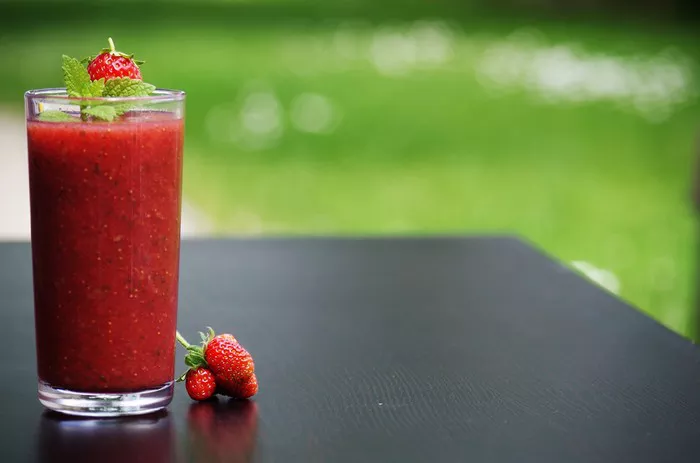Cassava cake is a popular dessert in many parts of the world, especially in countries in Southeast Asia, Latin America, and the Caribbean. It’s made from cassava root, which is grated and mixed with other ingredients like coconut milk, sugar, and eggs. The result is a rich, moist, and slightly chewy cake that is perfect for any occasion. In this article, we’ll go over everything you need to know about making cassava cake, from the ingredients to the step-by-step instructions.
What is Cassava Cake?
Cassava cake is a traditional dessert made from cassava, a starchy root vegetable. Cassava is also known as manioc or yuca and is a staple food in many tropical countries. The cake is usually rich in texture, with a slightly chewy consistency. The flavor is sweet and coconutty, thanks to the addition of coconut milk and other ingredients.
Cassava cake can be served warm or cold, making it a versatile treat. It’s often enjoyed during festive occasions, family gatherings, or even as an everyday snack.
Ingredients for Cassava Cake
Before you start making cassava cake, gather all the ingredients you’ll need. Here is a basic list of the ingredients for a traditional cassava cake recipe:
1. Fresh Cassava or Frozen Cassava
Fresh Cassava: If you can find fresh cassava, this is the best option. You will need to peel and grate it before using it in the recipe.
Frozen Cassava: If fresh cassava is unavailable, you can use frozen grated cassava. This is often a more convenient option, and it can be found in stores that sell international foods, especially in Asian and Latin American markets.
2. Coconut Milk
Coconut milk is essential for the rich flavor of cassava cake. It gives the cake a creamy texture and a hint of coconut flavor. You can use canned coconut milk or make your own at home.
3. Sugar
Sugar is used to sweeten the cake. You can use white sugar or a mix of white and brown sugar for a deeper flavor. Adjust the amount of sugar based on your personal sweetness preference.
4. Eggs
Eggs bind the ingredients together and help the cake rise. They also contribute to the texture and structure of the cake.
5. Condensed Milk
Condensed milk adds sweetness and richness to the cake. It helps create a smooth, velvety texture that enhances the flavor.
6. Butter
Butter adds richness and flavor to the cake. You can substitute with margarine if necessary.
7. Vanilla Extract
Vanilla extract adds a subtle sweetness and enhances the overall flavor of the cake.
8. Salt
A pinch of salt helps balance the sweetness of the cake and brings out the other flavors.
9. Baking Powder (Optional)
Some recipes call for baking powder to help the cake rise and become fluffier. This ingredient is optional, as the cassava itself provides enough texture and density.
10. Grated Cheese (Optional)
Some versions of cassava cake include grated cheese on top for an extra layer of flavor. This is optional but adds a savory contrast to the sweet cake.
Step-by-Step Instructions for Making Cassava Cake
Making cassava cake is easy, especially if you follow these step-by-step instructions. Here’s how to make your own cassava cake from scratch.
Step 1: Prepare the Cassava
If you’re using fresh cassava, begin by peeling the root. Cassava has a tough outer skin that needs to be removed. Be careful when peeling, as the skin can be tough. After peeling, grate the cassava using a box grater or a food processor. Once grated, squeeze out any excess liquid from the cassava. This helps the cake maintain its texture.
If you’re using frozen grated cassava, ensure it is thawed and drained before use.
Step 2: Prepare the Wet Ingredients
In a large mixing bowl, combine the following wet ingredients:
- 1 can of coconut milk
- 1 can of condensed milk
- 1/2 cup of melted butter
- 1 teaspoon of vanilla extract
- 3 eggs
Whisk the ingredients together until they are well combined and smooth. The eggs will add structure to the cake, while the coconut milk and condensed milk provide sweetness and creaminess.
Step 3: Add the Dry Ingredients
Next, add the grated cassava to the wet ingredients. Stir the mixture well to combine. Afterward, add the following dry ingredients:
- 1 cup of sugar (adjust to taste)
- 1/2 teaspoon of salt
- 1/2 teaspoon of baking powder (optional)
Mix everything together until the ingredients are evenly incorporated.
Step 4: Prepare the Baking Pan
Preheat your oven to 350°F (175°C). While the oven is heating, prepare your baking pan by greasing it with butter or oil. A 9×13-inch baking dish works well for this recipe, but you can use any pan of similar size. You can also line the pan with parchment paper for easy removal of the cake.
Step 5: Pour the Mixture into the Baking Pan
Once your ingredients are fully mixed, pour the cassava mixture into the prepared baking pan. Use a spatula to spread it out evenly.
Step 6: Bake the Cassava Cake
Place the pan in the preheated oven and bake for 1 hour to 1 hour and 15 minutes, or until the top is golden brown and a toothpick inserted into the center of the cake comes out clean. The baking time may vary slightly depending on your oven, so check the cake as it bakes.
Step 7: Add Grated Cheese (Optional)
If you’re using grated cheese, sprinkle it on top of the cake during the last 10 to 15 minutes of baking. This will allow the cheese to melt and form a golden, slightly crispy layer on top of the cake.
Step 8: Let the Cake Cool
Once the cake is done, remove it from the oven and allow it to cool in the pan for about 10 to 15 minutes. Afterward, you can transfer it to a cooling rack to cool completely.
Step 9: Slice and Serve
Once the cake has cooled, slice it into squares or rectangles. Serve it at room temperature or chilled. The cake can be enjoyed as a snack, dessert, or even a breakfast treat.
Tips for Making the Best Cassava Cake
Here are some tips to ensure that your cassava cake turns out perfectly:
Use Fresh Cassava If Possible
Fresh cassava gives the cake a more authentic texture and flavor. If you can find fresh cassava, use it over frozen grated cassava for the best results.
Drain the Cassava Well
Cassava releases a lot of liquid when grated, so it’s important to squeeze out any excess liquid before adding it to the batter. This helps prevent the cake from becoming too watery.
Adjust the Sweetness
Cassava itself has a natural sweetness, but the addition of sugar, condensed milk, and coconut milk can make the cake quite sweet. Taste the mixture before baking and adjust the sweetness to your liking.
Experiment with Toppings
While grated cheese is a common topping, you can experiment with other toppings like coconut flakes, chocolate chips, or a drizzle of caramel syrup. Feel free to get creative!
Store Leftovers Properly
If you have any leftover cassava cake, store it in an airtight container at room temperature for up to 2-3 days. You can also refrigerate it for longer storage, but be sure to bring it to room temperature before serving.
Variations of Cassava Cake
There are several variations of cassava cake depending on the region and personal preference. Here are some common variations:
Cheese Cassava Cake: Some recipes add grated cheese inside the cake batter for extra flavor. This is especially common in the Philippines.
Baked Cassava Cake with Coconut: You can add extra shredded coconut to the batter for added texture and flavor.
Ube Cassava Cake: In the Philippines, ube (purple yam) is sometimes mixed into the batter to create a colorful and flavorful version of cassava cake.
Conclusion
Cassava cake is a delightful treat that is easy to make and perfect for any occasion. By following these simple steps and tips, you can create a delicious, sweet, and creamy dessert that everyone will enjoy. Whether you make it with fresh cassava or frozen cassava, the result will be a rich, moist cake with a lovely coconut flavor. Try making cassava cake today and enjoy this tropical delicacy!
Related topics



























